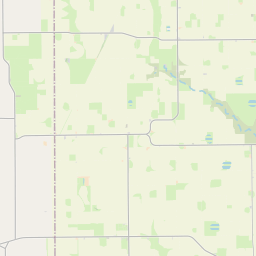Organization of Floyd County
Historical marker location:





Floyd County was created by the Texas Legislature in 1876. The Fort Worth and Denver City Railway Company began building westward from Wichita Falls, resulting in increased settlement of the area. Ranchers T. J. Braidfoot and J. R. McLain formed a partnership in 1887 to establish a town they hoped to promote as county seat. Named Della Plain, it soon boasted homes, businesses, and civic institutions. As more homesteaders settled northwest of Della Plain, a town named Lockney was created in 1889. Soon there was rivalry over which town would be named county seat. In 1890 M. C. Williams and J. K. Gwynn selected this site for a town called Floyd City. In an election held on May 28, 1890, the voters chose Floyd City as county seat. Officers elected were: Arthur B. Duncan, County Judge; John C. Hendrix, County Attorney; R. T. Miller, County and District Clerk; D. W. Jenkins, Sheriff and Tax Collector; E. E. Keeley, County Treasurer; L. C. Darby, Tax Assessor; W. M. Massie, Surveyor; and C. F. Ramsey, T. B. Michael, W. R. Vandeveer, and B. P. Merrell, County Commissioners. When a post office was established in September, the name of the town was changed to Floydada. (1990)
As one of the most visible programs of the Texas Historical Commission (THC), historical markers commemorate diverse topics in Texas history, including: the history and architecture of houses, commercial and public buildings, religious congregations, and military sites; events that changed the course of local and state history; and individuals who have made lasting contributions to the state, community organizations, and businesses.
The discovery of oil in 1901 near Beaumont, Texas, sparked an oil boom that transformed the state's economy and led to the rise of the modern petroleum industry.
The county itself was officially established in 1876 and named after Dolphin Ward Floyd, a pioneer settler in the region. The town of Floydada was designated as the county seat. Agriculture played a significant role in the early development of Floyd County, with settlers primarily engaged in livestock raising and crop farming.
In the late 19th and early 20th centuries, Floyd County experienced a boom in population and economic growth. The construction of the Santa Fe Railroad in the area facilitated transportation and trade, leading to the establishment of new businesses and industries. The discovery of oil in the early 1900s further fueled the county's growth, attracting oil companies and boosting the local economy.
Over the years, Floyd County has faced various challenges, including devastating droughts and the Great Depression. However, the community has exhibited resilience and perseverance, bouncing back from these hardships. Today, the county continues to be primarily rural, with agriculture, oil production, and wind energy serving as significant economic contributors.
Overall, Floyd County's history is a testament to the spirit of its residents and the determination to overcome obstacles while maintaining a strong sense of community identity.
Floyd County Timeline
This timeline provides a glimpse into the major events and milestones that have shaped the history of Floyd County, Texas.
- 1876: Floyd County is established and named after Dolphin Ward Floyd, a pioneer and Texas Ranger.
- 1880: The first permanent settlement is established in Floyd County.
- 1890: The county's population reaches over 1,000 residents.
- 1890s: Ranching becomes the primary economic activity in the area.
- 1907: The county seat is moved from Kai to Floydada.
- 1929: The Great Depression hits Floyd County, leading to economic hardships for many residents.
- 1930s: The Civilian Conservation Corps completes several projects in the county, providing much-needed employment opportunities.
- 1940s: Floyd County experiences a population boom due to the discovery of oil and gas reserves.
- 1950s: The construction of U.S. Route 70 through Floyd County improves transportation and access to the region.
- 1980s: The agriculture industry in Floyd County begins to decline, leading to a shift towards other economic sectors.
- 1990s: Education becomes a major focus in Floyd County with the establishment of several school districts.
- 2000s: Wind energy development becomes a significant industry in the county.